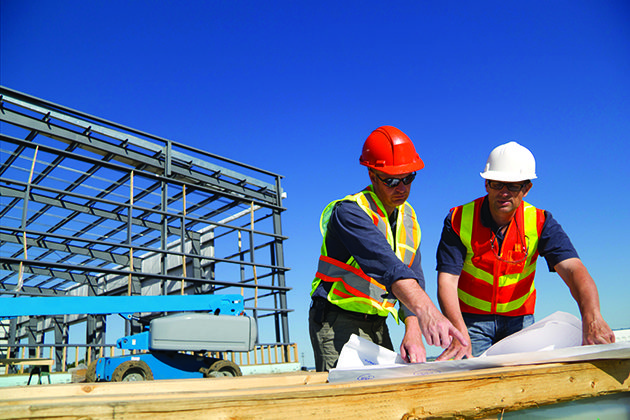Looking Ahead
The rising tide is floating every aspect of construction for 2017.

It’s been nearly ten years since the onset of the Great Recession, and the construction industry has gone through a rollercoaster of events from record highs to record lows. We’ve witnessed the downsizing of large firms, loss of income and project halts. We’ve seen a great workforce diminish, and we’ve struggled to bring it back. But even with all the uncertainty, we’ve mostly stayed afloat, reinvented ourselves and innovated new products and technology to keep the industry going.
Construction is a major contributor to the U.S. economy. The industry as a whole has more than 650,000 (about 154,000 in PHC) employers, with more than 6 million (about 715,000 in PHC) employees, and creates nearly $1 trillion worth of structures each year.
And though it’s been a slow climb back to the record highs of 2006, we’ve had a slow and steady climb to recovery, which will continue into 2017.
“There has been a very shallow glide path to recovery in construction growth since 2011,” says Pierre G. Villere, president and senior managing partner of Allen-Villere Partners, an investment-banking firm with a national practice in the construction materials industry. “The slow glide path up will be in single digit growth in 2017, but there is still room to grow.”
Tracking the growth of ready-mix concrete production is a great proxy of all manner of other construction materials, because where there is construction, there will be concrete. Though ready-mix concrete production has recovered from the depths of the Great Recession, it remains way off its peak in 2006, where the U.S. produced 458 million cubic yards of the material. In 2011, there was a 44 percent drop to 257 million cubic yards, but in 2016, ready-mix concrete production is estimated to be at about 360 million cubic yards, up 40 percent from the 2011 low.
In 2017, Congress is expected to invest hundreds of billions of dollars into infrastructure construction in the U.S., which will increase ready-mixed concrete production. “I am cautiously optimistic about the outcome of the election,” says Villere. “The only topic both presidential candidates agree on is infrastructure spending, and I believe we will finally see a breakthrough in congressional spending as it relates to infrastructure in 2017.”
The three major constraints however — labor, lots and lending — will continue to be a chokehold on overall construction spending in 2017. “This has not changed in two years,” says Villere.
Villere isn’t alone in being cautiously optimistic in his commercial construction forecast. The National Association of Home Builders (NAHB) chief economist Robert Dietz, the Associated Builders and Contractors (ABC) of America chief economist Anirban Basu, and American Institute of Architects (AIA) chief economist Kermit Baker all predict ongoing growth through 2017, with some caveats, as they relate to labor, lots and lending.
Baker cautions that the national home-ownership rate has fallen to the lowest level in a half-century, and it continues to fall. Household formation is not at historically normal levels, but it is starting to pick up and is expected to continue as millennials age.
Dietz notes that the biggest impediment for younger buyers to purchase homes is the lack of supply of affordable product. He echoes Villere’s concern about the lack of affordable lots and labor, and suggests that it is limiting expansion and construction of affordable homes for buyers.
The labor shortage has consistently been a major challenge for construction companies. According to The Associated General Contractors (AGC) of America, the hardest positions to fill include: hourly craft professionals, project managers and supervisors, and engineers. Contractors are coping with worker shortages by raising base pay, providing incentives, increasing contributions, and paying more overtime.
Results of a NAHB survey of builders indicates that lending conditions are easing more for loans on the construction side, despite the fact that easing is most needed for acquisition, development and construction loans related to land development.
Even with the three constraints, almost every type of construction, from building schools and hospitals to highways and roads, is still forecasted to grow, though slower, in 2017.
In a forecast released earlier this year, Baker notes, “revenue at architecture firms continues to grow, so prospects for the construction industry remain solid over the next 12 to 18 months.”
2017 expectations
In July of this year, overall construction spending totaled a $1.083 trillion annual rate, the highest since May 2008, and up 13.7 percent from July 2014, which was the eighth consecutive monthly increase, and the fastest year-over-year growth rate since March 2006, suggesting steady acceleration in construction.
Spending in the commercial/industrial sector is projected to increase by just 6.5 percent from 2016 to 2017, roughly half of the prior year’s gains.
According Baker, there are many positive signs in the economy at present, including job growth, the national unemployment rate is below 5 percent, consumer confidence levels are strong, the rate of inflation is extremely low, energy costs remain well below their average of the past several decades, interest rates are near record-low levels, stock prices remain high in spite of unusual volatility, and the single-family housing market is poised for strong growth.
The election will soon be over and the most recent CONFINDEX survey suggests that the period thereafter is quite likely to represent a period of re-accelerating construction activity.
It should be noted that he’s an eternal optimist; Villere says, “There is no down turn in sight.” Though construction spending and employment is flattening out, the U.S. economy as a whole will continue to grow.





